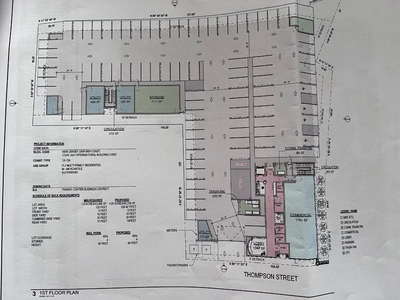2025’s Most & Least Educated Cities in America – WalletHub Study
To determine where the most educated Americans are choosing to settle down, WalletHub compared the 150 largest U.S. metropolitan statistical areas, or MSAs, across 11 key metrics. The data set ranges from the share of adults aged 25 and older with a bachelor’s degree or higher to the racial education gap to the quality of the public-school system.
View more here
The Trenton-Princeton area was ranked No. 20 among the most educated cities.
Overall, New Jersey, the New York / Newark area, was listed as Number 26 in the most educated areas in the study.
| Most Educated Cities | Least Educated Cities | |
| 1. Ann Arbor, MI | 141. Beaumont, TX | |
| 2. Durham, NC | 142. Hickory, NC | |
| 3. Madison, WI | 143. Salinas, CA | |
| 4. San Jose, CA | 144. Stockton, CA | |
| 5. Washington, DC | 145. Fresno, CA | |
| 6. Raleigh, NC | 146. Modesto, CA | |
| 7. San Francisco, CA | 147. Bakersfield, CA | |
| 8. Austin, TX | 148. McAllen, TX | |
| 9. Seattle, WA | 149. Brownsville, TX | |
| 10. Boston, MA | 150. Visalia, CA |
Key Stats
- The Ann Arbor, MI, metro area has the highest share of bachelor’s degree holders aged 25 and older, which is 3.7 times higher than in Visalia, CA, the metro area with the lowest share.
- The Oxnard, CA, metro area has the lowest racial education gap, with the share of black bachelor’s degree holders aged 25 and older at 30.55 percent, compared with 26.46 percent for their white counterparts, a difference of 4.09 percent favoring black people.
- For comparison, the national average for black people with the same attributes is 15.66 percent, and it is 23.89 percent for their white counterparts.
- The Anchorage, AK, metro area has the lowest gender education gap, with the share of female bachelor’s degree holders aged 25 and older at 23.53 percent, compared with 19.13 percent for their male counterparts, a difference of 4.40 percent favoring women.
- For comparison, the national average for women with the same attributes is 21.75 percent, and it is 20.77 percent for their male counterparts.
Methodology
To identify the most and least educated cities in America, WalletHub compared the 150 most populated U.S. metropolitan statistical areas, or MSAs, across two key dimensions, including “Educational Attainment” and “Quality of Education & Attainment Gap.”
We evaluated those dimensions using 11 relevant metrics, which are listed below with their corresponding weights. Each metric was graded on a 100-point scale, with a score of 100 representing the highest educational attainment and quality of education. For metrics marked with two asterisks (**), we used the square root of the population to calculate the population size in order to avoid overcompensating for minor differences across cities.
Finally, we determined each metro area’s weighted average across all metrics to calculate its overall score and used the resulting scores to rank-order our sample.
- Educational Attainment - Total Points: 80
- Share of Adults Aged 25 & Older with a High School Diploma or Higher: Full Weight (~20.00 Points)
- Share of Adults Aged 25 & Older with at Least Some College Experience or an Associate's Degree or Higher: Full Weight (~20.00 Points)
- Share of Adults Aged 25 & Older with a Bachelor's Degree or Higher: Full Weight (~20.00 Points)
- Share of Adults Aged 25 & Older with a Graduate or Professional Degree: Full Weight (~20.00 Points)
- Quality of Public School System: Double Weight (~4.44 Points)
Note: This metric is based on GreatSchools.org’s ratings of U.S. public schools. - Average Quality of Universities: Double Weight (~4.44 Points)
Note: This metric is based on WalletHub's “College & University” rankings report. - Enrolled Students in Top 822 Universities per Capita: Full Weight (~2.22 Points)
Note: This metric is based on WalletHub's “College & University” rankings report. - Number of Summer Learning Opportunities per Capita**: Full Weight (~2.22 Points)
- Racial Education Gap*: Full Weight (~2.22 Points)
Note: This metric specifically measures the difference between the percentage of black bachelor’s degree holders and the percentage of their white counterparts. - Gender Education Gap*: Full Weight (~2.22 Points)
Note: This metric specifically measures the difference between the percentage of female bachelor’s degree holders and the percentage of their male counterparts. - Education Equality Index Score: Full Weight (~2.22 Points)
Note: The Education Equality Index (EEI) is a comparative measure of the achievement gap between students from low-income families, as measured by participation in the free and reduced price lunch program, and their more advantaged peers. The EEI compares the proportion of students from low-income families who are proficient on a state assessment to all students across the state who took that same grade or subject level assessment.
Quality of Education & Attainment Gap - Total Points: 20
*Additional context: In metro areas where women have an advantage over men and black people have an advantage over white people, we gave extra credit compared to the metro areas with no gender-based/racial inequality.
Sources: Data used to create this ranking were collected as of June 2, 2025 from the U.S. Census Bureau, GreatSchools.org, GreatSchools.org - Education Equality Index, Yelp and WalletHub research.
More News from Raritan
- Update: What’s Happening With the Former Agway Site in Raritan The Agway site closed in 2023.
- ICYMI - Somerset County Sheriff’s Office Celebrates New K9 Achievements Nice News from Somerset Coumnty Sheriff's Office










